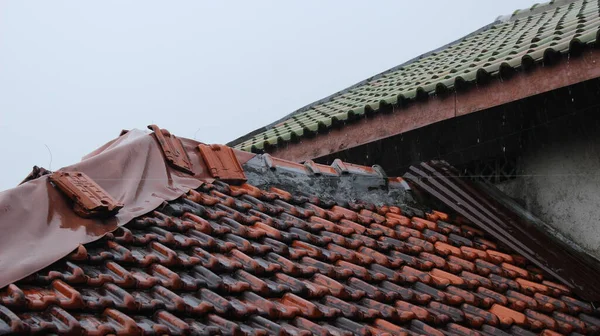While there’s a low likelihood of hurricane, tornado, or severe storm winds affecting Portland, homeowners should take steps to protect their homes. Preparing for a hurricane can be stressful. By following these tips, you can rest assured that your home will be protected.
For expert assistance with typhoon-damaged roofs in Portland, contact here certified roofing services promptly for reliable repairs and restoration.
1. Check Your Roof
A big storm can blow loose debris against your roof, turning harmless objects like yard waste and lawn furniture into dangerous projectiles. The same goes for the many items that can fall from trees. Look for signs of trouble, including limbs that are missing or withered and broken branches, and a tree that looks leaning. If a tree is showing these symptoms, call in a professional to assess its health.
Also look for shingle damage. Loose shingles or tiles may turn into projectiles during a storm, and they can also open your home to additional damage from wind and hail. Look for dents and creases on your roof, as well as loose flashing around fixtures, such as chimneys or vent pipes. Inside your house, check for water spots on walls, ceilings, insulation, and wood. This slow water infiltration can lead to harmful mold and mildew formation, so it’s best to get it taken care of as soon as possible.
2. Secure Loose Objects
A typhoon is a type of tropical storm or cyclone that occurs in the western Pacific Ocean. They form from existing weather disturbances and are fueled by warm ocean waters and moisture. When they reach a certain intensity, they can produce destructive waves, rains and winds.
Before a typhoon hits, make sure that any loose objects are secure or moved inside. This includes patio furniture, trashcans and other outdoor equipment. It’s also important to secure any fences, outdoor signs or tarps on construction sites.
Keep in mind that high winds can cause trees and other objects to fall on buildings, homes and cars. If you’re in a multi-story house, take refuge in a first floor interior room away from windows. Make sure you have a supply of canned food, first aid supplies and water. Also, be sure to monitor radio, TV (local and cable) and NOAA Weather Radio for official bulletins on the storm’s progress.
3. Cover Skylights
As mentioned above, skylights are one of the most vulnerable points on your roof and can be cracked, shattered, or even blown off during a hurricane. This is because they usually lead right into your home, meaning that once they get damaged they will start funneling water and other unwelcome guests inside. As a result, it’s essential to cover them with either plywood, a metal cap, or a legitimate storm shutter before the storm hits.
Since the consistent rainfall in Portland can make it hard for green roofs to retain a large fraction of incoming precipitation, it’s important to take this into account when considering your storm water mitigation strategy. Generally speaking, increasing the substrate depth by 50 mm can increase annual retention by up to 10%. This is especially true in Portland’s climate where the soil stays wet for prolonged periods of time.
4. Install a Storm Shelter
A storm shelter, also known as a safe room, is designed to withstand the high winds and flying debris that accompany hurricanes, tornadoes, and other severe weather events. They can be built above-ground or below-ground, in a garage or basement.
If your house is located in an area that is prone to severe weather, consider having a professional install a storm shelter or a safe room as part of your home’s construction process. A professionally-installed shelter is able to resist damage and withstand the force of wind up to 165 miles per hour.
Make a plan with your family regarding where you will go to seek shelter in the event of a typhoon. Make sure to include a safe place away from windows (like a bathroom or walk-in closet), a supply of food and water, a first aid kit, a mattress, pillows, sleeping bags, and battery-powered radios. Be sure to turn off all utilities if instructed by authorities to do so.




